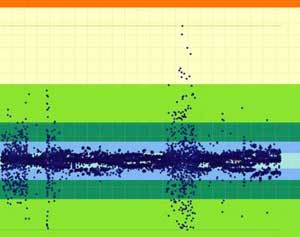Electronic commands passed from machine to machine over data networks increasingly drive today’s precisely timed and sequenced manufacturing production lines.
However timing irregularities in the signals from even one machine - a difference of only a tenth of a second from the expected - can result in havoc for manufacturing processes on the plant floor.
The timing glitches, called 'cyclic jitters', can cause real jitters, making production machines jump or shake, damaging products, even shutting down assembly lines.
Now, US National Institute of Standards and Technology (NIST) engineers have created a software program to help avoid that problem.
The NIST 'EtherNet/Industrial Protocol (IP) Performance Test Tool' enables manufacturers to anticipate how certain machines will perform as part of their data communication system. Data from the tool also can provide vendors with information need to better tune the performance of their equipment.
The EtherNet/IP Performance Test Tool collects device information from the user, generates a set of test scripts based on that information, analyses the performance data and reports the results to the user. The software package provides device transmission data for three different conditions: with no background electronic traffic, with small background traffic and with more than 240 devices on the network.
NIST began working on the project at the urging of US Council for Automotive Research (USCAR)’s Plant Floor Controllers Task Force and developed the program in conjunction with the Open DeviceNet Vendor Association (ODVA) under a Cooperative Research and Development Agreement (CRADA).
ODVA, a vendor organisation that maintains the DeviceNet and EtherNet/IP standards used extensively by the US automotive industry, plans to begin using the test tool as part of a new performance testing laboratory service later this year.

The points on this graph from the EtherNet/IP Performance Test Tool represent data packets. Those points pictured away from the centerline reflect timing errors in the network communications of the device being analysed




Red Bull makes hydrogen fuel cell play with AVL
Formula 1 is an anachronistic anomaly where its only cutting edge is in engine development. The rules prohibit any real innovation and there would be...